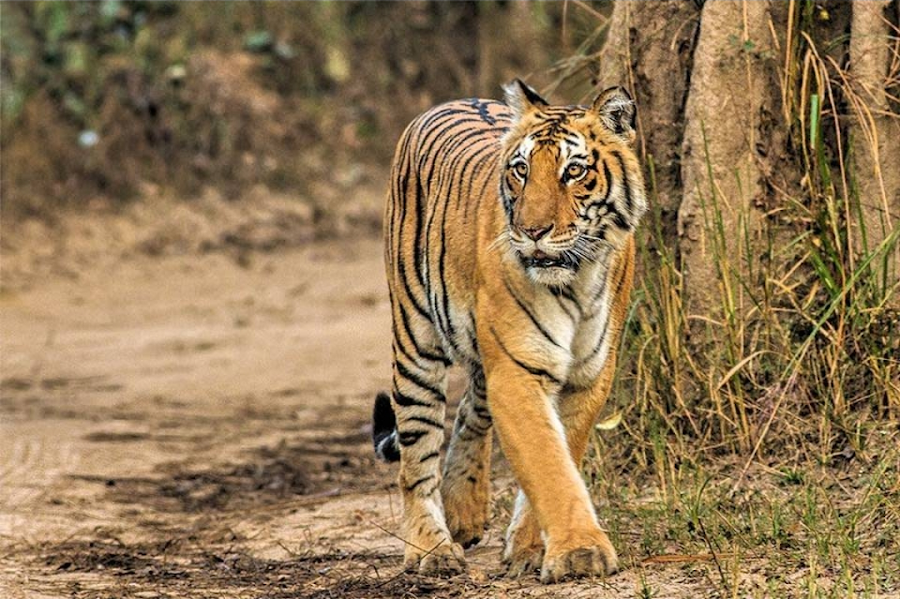
Jim Corbett National Park
Pauri Garhwal, India
- Capture scenic landscapes with photography
- Enjoy jeep safari for wildlife viewing
- River rafting at Kosi river
- Spot diverse bird species
- Take nature walk in designated areas
- Visit the Corbett museum
Known for:
Description:
The Kotdwar entrance to Jim Corbett National Park offers a less crowded and more serene entry point to this renowned wildlife sanctuary. Situated in the Pauri Garhwal district of Uttarakhand, it provides a unique opportunity to experience the park's diverse flora and fauna, including the majestic Bengal tiger, elephants, deer, and various bird species. The landscape is characterized by dense forests, grasslands, and the Ramganga River, creating a picturesque setting for wildlife enthusiasts. Jeep safaris and nature walks are popular activities, allowing visitors to immerse themselves in the natural beauty of the region. The Kotdwar entrance offers a tranquil escape from the bustling city life, making it an ideal destination for nature lovers and adventure seekers alike. It's a gateway to unforgettable wildlife encounters and breathtaking scenery.
History:
Jim Corbett National Park, established in 1936 as Hailey National Park, was renamed in honor of the legendary hunter and conservationist, Jim Corbett. Corbett played a significant role in identifying and protecting the area's rich biodiversity. Initially, the park aimed to protect the endangered Bengal tiger and its habitat. Over the years, the park has expanded and evolved, becoming a crucial center for wildlife conservation and research. The Kotdwar entrance, while not the original entry point, has gained prominence as an alternative access route, offering a different perspective of the park's vast landscape. This entrance has helped distribute tourist traffic and reduce pressure on the more popular entry points. It continues to play a vital role in preserving the park's ecological integrity and promoting sustainable tourism.